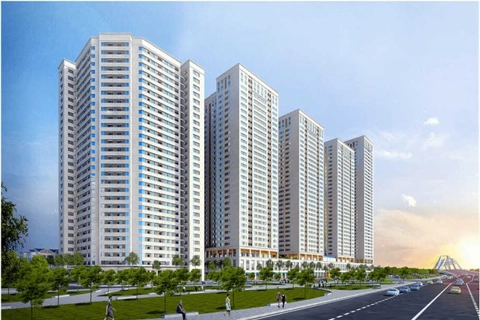Property
Pedestrian zone inflates the surrounding land’s price in Hanoi
Aug 17, 2017 / 08:48 PM
Areas around the zone are now some of the most expensive in Vietnam
Since September 2016, Hanoi pedestrian zone was piloted with 16 streets around Hoan Kiem Lake being turned into walking zone at 3 weekend days. Along with attractive cultural activities and entertainment forms, it becomes a tourist hub of the city. With positive response from both tourists and locals, it can be said that the space and surrounding streets has contributed to improve living environment, honoring historical and cultural heritages of Hanoi and meet the recreation demand of local citizens and foreign visitors.
However, the more this zone’s more popular, the more land price around these area increased. In details, the plans to pedestrianize backpacker streets and nearby areas in Hanoi have sent land prices through the roof to around $22,000 per square meter, on average.
And landlords are not missing out on the chance to cash in on the plan. Several parts of Hanoi’s Old Quarter around the backpacker area have opened walking zones, and prices have shot up to nearly VND700 million ($31m) per square meter on some streets.
Prices for one square meter on Dao Duy Tu Street which leads to the backpacker zone have climbed by over 51% from VND360 million($16m) to VND547 million ($24,8m) over the past seven months. Besides, the current prices of other popular routes stand at VND660 million per square meter on Hang Can Street, VND650 million ($29m) on Hang Dao Street and VND582 million ($25m) on Dinh Liet Street.
Expect to pay VND340-495 million ($15m-$22m) on other streets that lead to the backpacker area, including Ta Hien, Nguyen Sieu, Ma May, Hang Giay, Lan Ong, Hang Ngang, Hang Buom, Luong Ngoc Quyen and Luong Van Can.

Ta Hien - one of those streets with high land price.
|
However, the more this zone’s more popular, the more land price around these area increased. In details, the plans to pedestrianize backpacker streets and nearby areas in Hanoi have sent land prices through the roof to around $22,000 per square meter, on average.
And landlords are not missing out on the chance to cash in on the plan. Several parts of Hanoi’s Old Quarter around the backpacker area have opened walking zones, and prices have shot up to nearly VND700 million ($31m) per square meter on some streets.

Cultural activity at pedestrian zone in Hanoi
|
Prices for one square meter on Dao Duy Tu Street which leads to the backpacker zone have climbed by over 51% from VND360 million($16m) to VND547 million ($24,8m) over the past seven months. Besides, the current prices of other popular routes stand at VND660 million per square meter on Hang Can Street, VND650 million ($29m) on Hang Dao Street and VND582 million ($25m) on Dinh Liet Street.
Expect to pay VND340-495 million ($15m-$22m) on other streets that lead to the backpacker area, including Ta Hien, Nguyen Sieu, Ma May, Hang Giay, Lan Ong, Hang Ngang, Hang Buom, Luong Ngoc Quyen and Luong Van Can.








